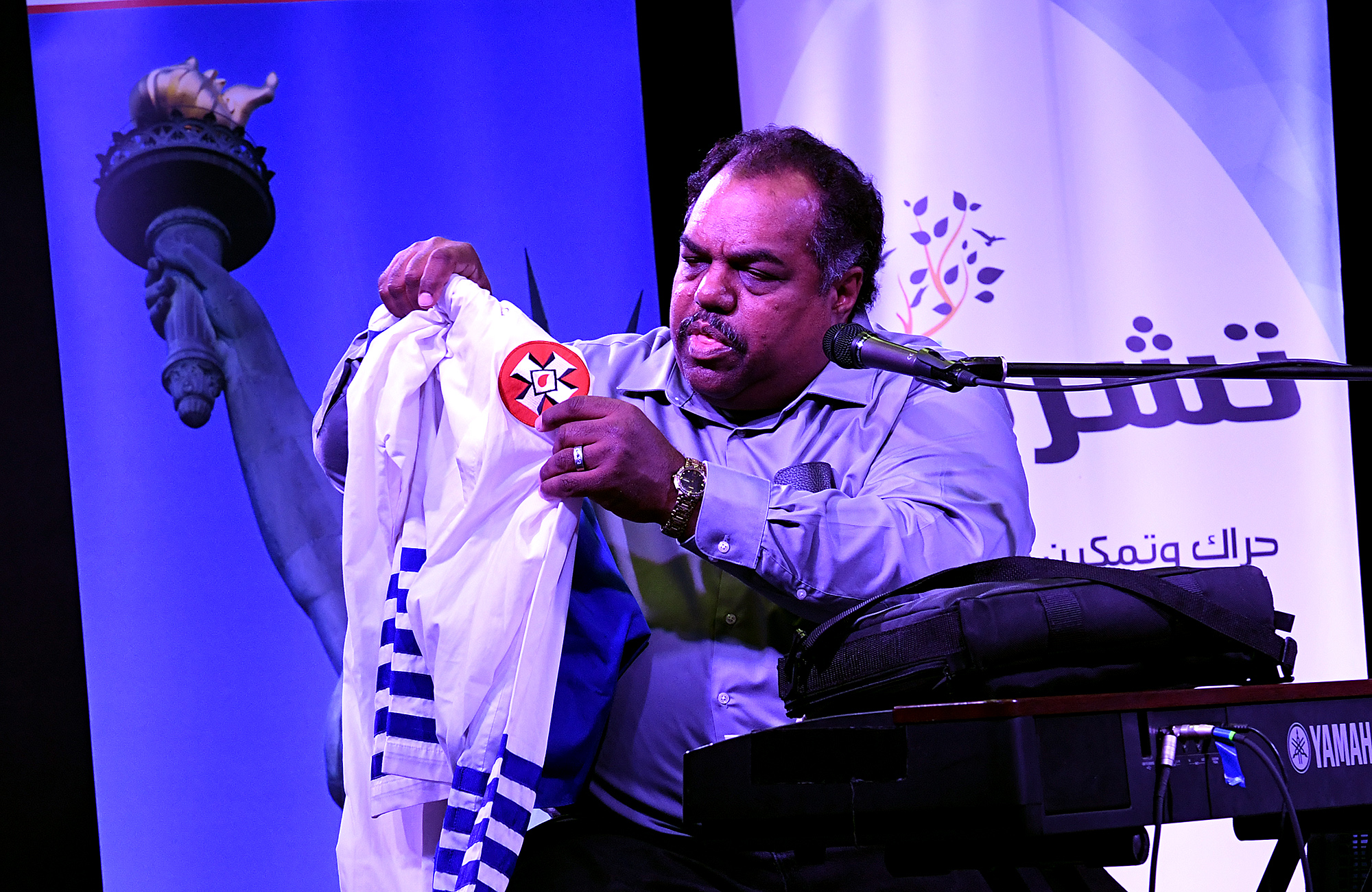This month in Greater Good Magazine, reporter Zaid Jilani writes about why we often judge people by their group membership and new research that suggests other ways we might see each other.
In 1983, a white man walked into an all-white music venue in Frederick, Maryland, and he noticed that a black man was playing in an otherwise all-white country band.
He approached the musician and told him, “I really like y’all’s music. This is the first time I ever heard a black man play piano like Jerry Lee Lewis.” The piano player, a musician named Daryl Davis, replied that Jerry Lee Lewis was inspired by black musicians.
 |
|
Daryl Davis holding up KKK robes at Blues and Rock for Humanity in November 2017. © Wikipedia / Creative Commons
|
The man didn’t believe Davis, but liked his music so much he was willing to have a drink with Davis and talk about their shared love of piano music. He told Davis he had never had a drink with a black man before. Davis wanted to know why, and that’s when the man admitted he was a member of the Ku Klux Klan (KKK).
Despite being a Klansman, the man became a regular at Davis’s performances, because he learned to see him as a great individual piano player, rather than through the lens of group stereotypes. Ultimately, Davis discovered, the man was kicked out of the local KKK chapter.
This story reveals a crucial skill for building bridges between different kinds of people: focusing on individual characteristics rather than group identity. The encounter set Davis off on a crusade — he went on to befriend and convince over 200 members of the KKK to leave the organization. The entire effort was primarily based on Davis’s ability to connect with them one on one.
It might seem hard to argue with the idea that we should focus on what individuals say and do and believe, instead of unthinkingly inferring those things from their group membership — but, in fact, we use group affiliation to evaluate individuals all the time. What psychological forces drive us to do that, even when stereotyping other people is against our values? How can we teach ourselves to overlook group stereotypes and instead listen to individual stories?
We can find some answers in the research — and today we can see those scientific insights being put to the real-world test by bridge-building organizations around the United States.
Why we stereotype
Psychologists call our mental shortcuts “heuristics” — and we need them to help our brains navigate the world. If you see a creature with feathers sitting on a tree branch, it probably does fly and eat worms. If you are planning a trip to upstate New York in the winter, it’s not a bad idea to bring snow boots.
But heuristics can lead us to make potentially damaging assumptions about other people. Racial stereotyping, for instance, comes from the belief that membership in a racial group defines someone on a range of characteristics, including their behavior. This idea that group membership determines innate qualities is called “essentialism.”
Read more of this article at Greater Good Magazine »
Add new comment